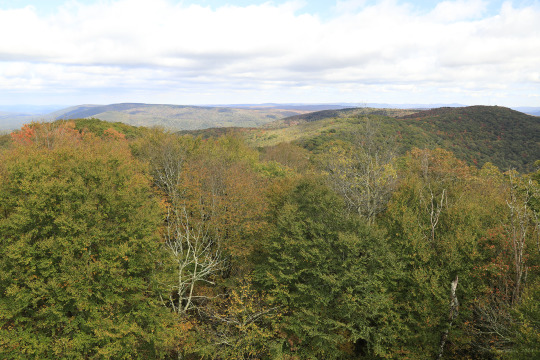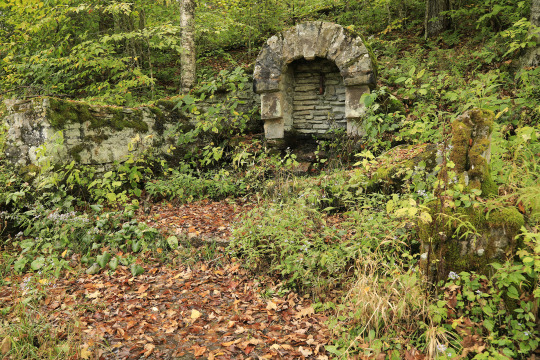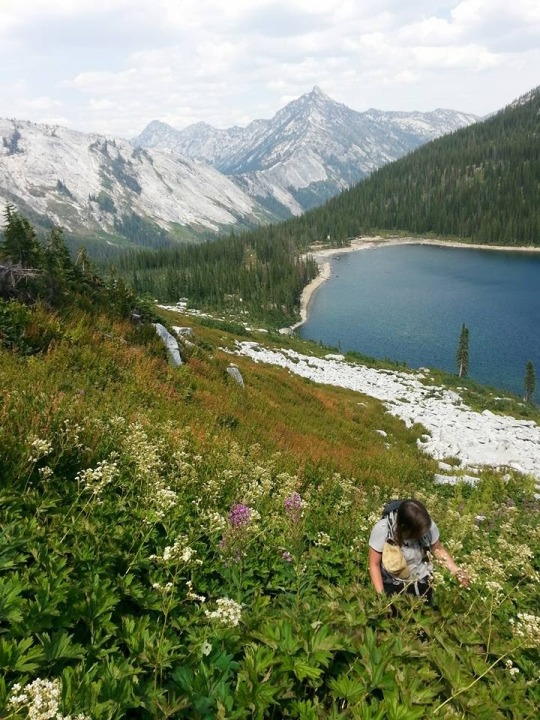#wilderness conservation
Text
God, I love October in the Pacific Northwest. The smell of the air makes me want to move to the mountains and never live in the city again. Not too long ago I used to be out there cross cutting, chopping wood, and passing honey jack around the campfire with forest rangers and rafting guides. I can't express how much I miss that time in my life. Hopefully someday I'll be out there again.
#Shout out to ranger Dave#back country#back country Idaho#Montana wilderness#Wilderness conservation#personal#Rambling#October#Pnw
5 notes
·
View notes
Text
“I loathe that word ‘pristine.’ There have been no pristine systems on this planet for thousands of years,” says Kawika Winter, an Indigenous biocultural ecologist at the University of Hawaiʻi at Mānoa. “Humans and nature can co-exist, and both can thrive.”
For example, in the Proceedings of the National Academy of Sciences (PNAS) in April, a team of researchers from over a dozen institutions reported that humans have been reshaping at least three-quarters of the planet’s land for as long as 12,000 years. In fact, they found, many landscapes with high biodiversity considered to be “wild” today are more strongly linked to past human land use than to contemporary practices that emphasize leaving land untouched. This insight contradicts the idea that humans can only have a neutral or negative effect on the landscape.
Anthropologists and other scholars have critiqued the idea of pristine wilderness for over half a century. Today new findings are driving a second wave of research into how humans have shaped the planet, propelled by increasingly powerful scientific techniques, as well as the compounding crises of climate change and biodiversity loss. The conclusions have added to ongoing debates in the conservation world—though not without controversy. In particular, many discussions hinge on whether Indigenous and preindustrial approaches to the natural world could contribute to a more sustainable future, if applied more widely.
3K notes
·
View notes
Text
WATCH LIVE: Biden delivers remarks on protecting America's outdoor spaces in Vail, CO
WATCH LIVE: Biden delivers remarks on protecting America’s outdoor spaces in Vail, CO
Stream your PBS favorites with the PBS app: https://to.pbs.org/2Jb8twG
Find more from PBS NewsHour at https://www.pbs.org/newshour
Subscribe to our YouTube channel: https://bit.ly/2HfsCD6
Follow us:
TikTok: https://www.tiktok.com/@pbsnews
Twitter: http://www.twitter.com/newshour
Instagram: http://www.instagram.com/newshour
Facebook: http://www.pbs.org/newshour
Subscribe:
PBS NewsHour podcasts:…
View On WordPress
#America&039;s outdoors#biden#Biden administration#Biden live#conservation#joe biden#Joe Biden live#live#live stream#National Parks#Outdoor spaces#outdoors#PBS#PBS NewsHour#wilderness#wilderness conservation#Wildlife Conservation
0 notes
Text
Big frog news dropping on Wednesday my dudes, hold onto your butts.
#just something I was involved in#a new paper#in some niche journal or something#it’s called like ‘forest’ or ‘wilderness’ or something like that#you’ll see#frogs#conservation#👀
999 notes
·
View notes
Text

#CanadianBlackBear
So what do you do if you ever encounter the most common and widespread Canadian Black Bear?
Nothing. You just take pictures.
@BenAdrienProulx
October 8th, 2023
#Canadian Black Bear#Bear#Wildlife#Wildlife Photography#Animal Photography#Animals are Friends#Nature Canada#ECCC#Environment and Climate Change Canada#IUCN#International Union for Conservation of Nature#NCC#Nature Conservancy of Canada#Wilderness Need Protection#Wildlife Need Protection#Mountainous Parts of the Northern Hemisphere#Canada#The RavenKeeper
477 notes
·
View notes
Text












Bickle Knob is the high point on Forest Road 91 in the Monongahela National Forest, which traverses some of the wildest and most beautiful areas of the Allegheny Mountains. Depending on which end you enter, the gravel road starts or finishes with the Stuart Recreation Area and the Otter Creek Wilderness. Bickle Knob rises roughly halfway between the two, with Bear Heaven Campground squeezed into a sharp bend on the descent from the top of the mountain. Bickle Knob is most notable for hosting one of the few remaining forest service fire towers in West Virginia, which is accessible to the public. The original cab has been removed and replaced with an open viewing platform. Views are breathtaking in all directions. The tower and other facilities in the area were built by the Civilian Conservation Corps (CCC) in the early days of the national forest system. The most evident artifact, aside from the fire tower, is the gorgeous stonework of an historic water well located along the road, a memorable legacy from a day and an age when hand-carved and constructed edifices were both a necessity and an artform; they need to be restored and protected for future generations.
#appalachia#vandalia#west virginia#wildflowers#flora#allegheny mountains#fall#bickle knob#forest road 91#otter creek wilderness#stuart recreation area#monongahela national forest#civilian conservation corps#artifacts#human hisory#natural history#blue wood aster#crooked-stemmed aster#fire tower
117 notes
·
View notes
Text

View On WordPress
74 notes
·
View notes
Text
"At least 239 barriers, including dams and weirs, were removed across 17 countries in Europe in 2021, in a record-breaking year for dam removals across the continent.
Spain led the way, with 108 structures taken out of the country’s rivers. “Our efforts to expand dam removals across Europe are gathering speed,” said Pao Fernández Garrido, project manager for the World Fish Migration Foundation, who helped produce Dam Removal Europe’s annual report.
“An increasing number of governments, NGOs, companies and communities are understanding the importance of halting and reversing nature loss, and buying into the fact that dam removal is a river-restoration tool that boosts biodiversity and enhances climate resilience. We’re also seeing lessons being learned from previous dam removals, new countries kickstarting removals, and new funds, including crowdfunding.”
More than 1m barriers are estimated to exist on Europe’s rivers, with many built more than a century ago. At least 150,000 are old, obsolete barriers that serve no economic purpose.
Dams, weirs and other river obstacles block fish migration routes, often leading to the loss of breeding areas and reduced numbers of species such as salmon, sturgeon, trout and eel, which affects the wider biodiversity of ecosystems, including species ranging from eagles to otters. Free-flowing rivers also transport sediments and nutrients.

Pictured: Before-and-after shots of a dam removal on a river in Parc naturel régional du Haut-Jura, France, in 2021.
“Removing dams is a real need,” said Fernández Garrido. “We have hundreds of thousands of abandoned barriers, which is a safety problem. Dams affect water quality and underground water levels, cause channel and coastal erosion and beach disappearances, generate greenhouse gas emissions and lead to declines and even extinctions of migratory fish populations, with a 93% decline of migratory fish in Europe in the last 50 years. Dams have a negative impact on the environment, so if a dam or weir isn’t strictly necessary any more, we mustn’t pass the burden to future generations.”
Dam Removal Europe is a coalition of seven organisations, including the World Fish Migration Foundation, WWF, the Rivers Trust and Rewilding Europe, working to restore healthy, free-flowing rivers across the continent. The latest report found that 76% of the removals were of small dams and weirs, but 24% were higher than 2 metres. Three countries – Portugal, Montenegro, and Slovakia – recorded their first ever dam removals in 2021. In Finland, a functioning hydropower dam was also dismantled, the first of three on the Hiitolanjoki River, which, when completed, is expected to allow landlocked salmon to return to spawning grounds.

Pictured: The Cantabrian River Basin Authority in Spain removed 50 barriers in 2021. Photograph: CRBA
“This is the perfect example to show that when an operating hydropower dam isn’t needed, and energy can be supplied by other sources, it’s worth removing it and recovering the river,” said Fernández Garrido. “The river will be totally free of dams for the first time in over 120 years.” ...
Fernández Garrido continued, “We really want to see governments from all countries taking action and creating national grants and plans to completely free some of their rivers from obstacles, so there is, at least, a free and healthy river per country. We’re talking about creating a big shift.”"
-via The Guardian (US), 5/15/22
#spain#europe#dam removal#rivers#riparian#rewilding#conservation#wilderness restoration#salmon#fish#ecosystem restoration#good news#hope
216 notes
·
View notes
Text
One of the toughest things I have to balance out as someone who is trained in and advocates for ecopsychology and ecotherapy is the use of the restorative properties of nature versus the impacts our time in nature can have on other living beings. There are scads of studies that support the many mental and physical benefits for us when we spend even a little time outdoors.
But I think this article (which you can read in full here) does raise some important points. Almost all wildlife are dealing with some level of habitat loss and fragmentation, and if sensitive species are being pushed out of what's left due to human presence, then that puts them at greater risk of extinction. There's still more research to do on this subject, of course, to include seeing which species are most heavily affected and which activities have the greatest negative impact. The results could help us to be more judicious in where and how we engage with the outdoors, especially in less populated areas.
I don't think we should just stop going to any place wilder than a city park. Part of how we ended up in our current situation with widespread ecological devastation is an increasing perceived separation from the rest of nature. The more time we spend in direct contact with other non-domesticated species, the more we learn about them and the more responsibility we feel toward them. And there's something very healing about the awe one experiences when seeing an elusive wild animal, even at a distance, or being immersed in a wild place that makes us feel we are a part of something so much greater than ourselves.
But we really do need to be paying attention to and asking questions about the side effects of our journeys into wilder nature, and then using that to help keep adjusting the balance between our needs and those of other living beings. I look forward to seeing more studies on this topic.
#hiking#outdoors#nature#wildlife#wilderness#ecopsychology#ecotherapy#nature therapy#mental health#ecology#animals#environment#conservation#environmentalism
62 notes
·
View notes
Text
election day! please don't make me want to blow up this country :)
#cece.txt#if geert wilders wins i'm going to start a transgender commune on the moon that totally isn't a cannibalistic cult#or omtzigt or another conservative
24 notes
·
View notes
Text

#me#montana#wilderness#wilderness conservation#nature#photography#glacial lake#lake#backpacking#2015#bitterroot mountains#wildflowers#mountains#trees#forest#candid
13 notes
·
View notes
Text
The notion that humans, especially Indigenous humans, must be removed from nature in order to save it, and that “pristine wilderness” must be quarantined from an inherently destructive humanity has its historical roots in white supremacy. When European colonists arrived in North America, they did not recognize the active management of ecosystems by Indigenous groups as “agriculture.” As Indigenous people lived on but did not “steward” the land in a capitalist sense, the land was viewed as a “virgin wilderness” being “wasted” on “unproductive” peoples. Their dispossession was therefore legitimated by God, who had “given” the land to European settlers to tame and cultivate. Such notions were invoked during the foundation of the United States, and have been used by the religious right in Israel to justify the ongoing expropriation of Palestinian territory.
Of course, the Indigenous people of the Americas, like Indigenous people all over the world, were engaged in active management of the ecosystems in which they lived and in cultivation of resources to support their societies. Advanced agricultural techniques like prescribed burning were used to encourage the growth of gardens of edible food within old growth forests or prairies, just as the purposeful management of Bison and other game stood in for (arguably much crueler) European-style animal husbandry. These practices of cultivation were alien, and indeed invisible, to European eyes.
592 notes
·
View notes
Text
Lar gibbon Maximus leaps through his enclosure. He lives at the Calgary Zoo with his brother Majimal.
19 notes
·
View notes
Text

These ones I do know! Turkey-tail mushrooms (Trametes versicolor) are very distinct.
#Bruce Trail#Jones Falls#Jones Falls Side Trail#Pottawatomi Conservation Area#Niagara Escarpment#Bruce County#Ontario#Canada#hiking#hiking trail#forest#trees#wilderness#outdoors#mushroom#mycology#fungus#Trametes versicolor#turkey tail mushroom#photography#digital photography#DSLR#Canon 6D#photographers on Tumblr#bracket fungus
109 notes
·
View notes
Text

#ThawPeriod
Mountainous Parts of the Northern Hemisphere.
April 16th, 2024.
@BenAdrienProulx
#Thaw Period#Raw Nature#Wilderness Need Protection#IUCN#International Union for Conservation of Nature#ECCC#Environment and Climate Change Canada#FeederWatch#Count Feeder Birds for Science#NCC#Nature Conservancy of Canada#Nature Photography#Nature Canada#Wild Bird Photography#Wildlife Photography#Animal Photography#Mountainous Parts of the Northern Hemisphere#Canada#The RavenKeeper
173 notes
·
View notes
Photo

Feast your eyes on the fiery blooms of Platanthera ciliaris, a stunning orchid gracing the U.S. wilderness. Its vibrant orange petals, resembling a burst of miniature flames, bring a touch of wild magic to the green tapestry they rise from.
#Platanthera ciliaris#orchids#wildflowers#nature photography#orange flowers#fiery blooms#wilderness#wild magic#green tapestry#floral beauty#botanical#nature lovers#biodiversity#conservation#eco-awareness
4 notes
·
View notes